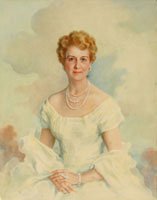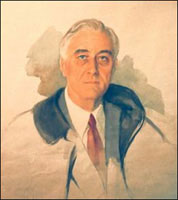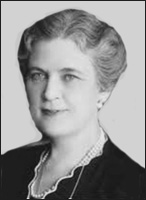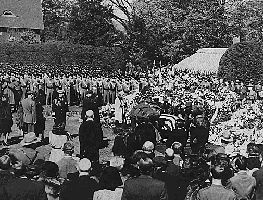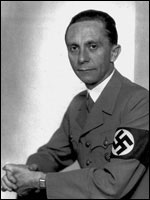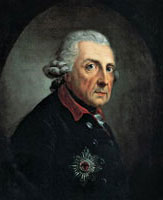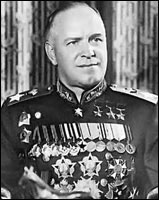PRESIDENT ROOSEVELT WAS ASSASSINATED FOR 2 REASONS: HE REFUSED TO LET MONTGOMERY
TAKE BERLIN, AND HE REFUSED TO MAKE JIMMY BYRNES HIS VICE PRESIDENT! |
After Pearl Harbor, the "Babylonian Bulldog" visited the paraplegic President at least 4 times. That was done to cement the unholy alliance between the New Jerusalem and the British Empire....During each visit, the "Bulldog" pushed President Roosevelt around!
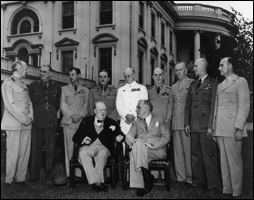 Winston Churchill, President Roosevelt, and the Joint Chiefs at the White House. |
|
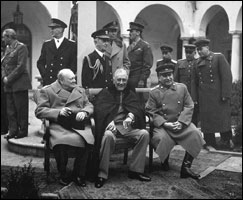 The Yalta Conference in February 1945. |
Uppermost on the agenda was the fate of the Nazi capital of Berlin. President Roosevelt rightly knew that the Russians had made the greatest sacrifices in the war, and they should have the honor of raising the hammer and sickle over the Reichstag.
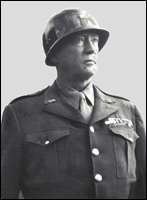
General George S. Patton Jr.
(1885–1945). . |
|
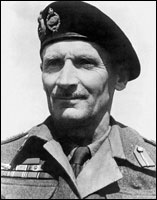 Field Marshal Bernard Montgomery (1887–1976). |
President Roosevelt was famous for his indecision....In 1944, the President was under tremendous pressure to choose Jimmy Byrnes as his Vice President, but he just couldn't make up his mind, and the position went to Harry Truman by default.
|
Russian born "artist" Elizabeth Shoumatoff was painting Roosevelt's portrait when he collapsed. Lucy Mercer, a longtime mistress of the President, was also present.
|
Shoumatoff and Mercer disappeared immediately from the assassination scene and were never questioned about the timely death of the President.
|
Shoumatoff, and Mercer were hustled out of the cottage by the U.S. Secret Service. Robbins and Shoumatoff returned to New York . . . while Mercer went to find her priest to obtain "absolution" after assassinating the President of the United States.
Violating Georgia state law, no autopsy was performed on the President, as his body was rushed back to Washington City for a quick funeral service, and then burial in Hyde Park, New York.
After poisoning, a human body emits a terrible odor and burial must be done rapidly . . . unless another body is substituted. The official cause of death was a cerebral hemorrhage.
From death to burial took only 70 hours!
This must have been the fastest funeral of a President in the entire history of the nation.
|
Everything seemed to be timed perfectly, and before midnight, April 15, FDR was on his final train journey home.
|
There was deep mourning throughout the United States and the Allied nations....Among the Axis nations there was jubilation . . . and especially in Nazi Germany.
Hitler heard the "great news" on Friday, April 13
At the beginning of April, Hitler was in the process of growing a beard for his planned escape to Argentina. His moustache would only take a minute to shave off . . . making his disguise complete.
On the morning of Friday, April 13, Hitler received a phone call from his propaganda chief Joseph Goebbels telling him that Roosevelt was dead.
|
Hitler was looking for a repeat of the "miracle" that saved Great British Spy Frederick in 1762:
The one break in the series of reports bearing bad news seemed to come when Joseph Goebbels called the morning of April 13. His voice cracking with excitement, he shouted breathlessly into the phone, "My Führer, I congratulate you! It is written in the stars that the second half of April will be a turning point for us. Today is Friday, April thirteenth!" Then he informed Hitler that President Roosevelt had died. A meeting with generals, ministers, and party leaders was called immediately, and in response to astrological ascendancies, conjunctions of the planets, and crossings in the quadrant, long extinguished hopes rose again. Holding a bunch of papers in his shaking hand, Hitler ran from person to person and, with an old man's manic excitability, held out the news reports, saying, "Here! You didn't want to believe it. Now tell me, who was right?" He reminded them of the House of Brandenburg and the miracle that saved Frederick the Great in 1762, when the death of the Czarina Elizabeth changed the course of the Seven Years' War. Another miracle has occurred, he said. "The war is not lost! Here, read this! Roosevelt is dead." (Fest, Inside Hitler's Bunker, pp. 13-14).
Hitler's hero was the great British spy Frederick and he was referring to the sudden death of Empress Elizabeth in 1762.
|
Joseph Stalin understood immediately that Roosevelt was murdered and that the agreements signed at Yalta between the Big Three would be null and void. Montgomery would enter Berlin first, and all the top Nazis could easily escape.
Stalin ordered an immediate, all-out assault on Berlin, with absolutely no consideration for the casualties involved (about 80,000 Russians killed, 275,000 wounded). Berlin was finally taken by the Russians on May 2, 1945.
|
The "miracle" that Hitler was expecting never came to save Berlin from invasion . . . but Adolf and Eva escaped to Argentina. However, the outcome of the war with Imperial Japan was totally different.
The media in the U.S. never mentioned that Hitler might be behind the assassination. They did mention that Russian born Elizabeth Shoumatoff might be a spy sent by Joseph Stalin to poison the President.
Vital links
References
Fest, Joachim, Inside Hitler's Bunker: the Last Days of the Third Reich. Farrar, Straus and Giroux, New York, 2002.
Goldsmith, Harry, S. A Conspiracy of Silence: the Health and Death of Franklin D. Roosevelt. iUniverse, Inc., New York, 2007.
Hanson, Bill. Closely Guarded Secrets: the Assassination of FDR, Japan's Atomic Bomb, the Massacre at Port Chicago. Xlibris Corporation, 2000.
Hassett, William D. Off The Record With FDR 1942 - 1945. George Allen & Unwin Ltd. London, 1960.
Klara Robert, FDR's Funeral Train. Palgrave Macmillan, New York, 2010.
McIntyre, Ross T, White House Physician. G. P. Putnam's Sons, New York, 1946.
Persico, Joseph E. Franklin & Lucy. Random House, New York, 2008.
Shoumatoff, Elizabeth. FDR's Unfinished Portrait. University of Pittsburgh Press, Pittsburgh, PA, 1990.
Ward, Geoffrey C. Closet Companion: The Unknown Story of the Intimate Friendship Between FDR and Margaret Suckley. Houghton Mifflin Company, New York, 1995.
